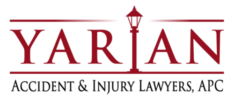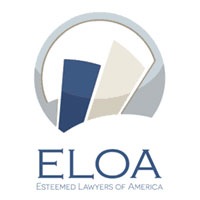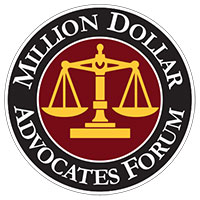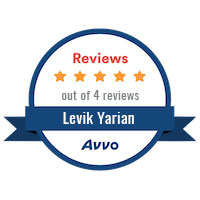Rear-end collisions usually happen in stop-and-go traffic but can also occur on highways and rural roads. In most cases, the driver in the rear is at fault, but sometimes, the driver in front can cause a rear-end wreck. Rear-end crashes could lead to multi-vehicle pileups, especially on the highway or on roads with higher speed limits.
Rear-end wrecks can cause more injuries than you might think, even when those in the front vehicle are wearing their seatbelts. While you can sometimes avoid rear-end collisions with a quick maneuver, sometimes, you do not see the crash coming until it is too late. Below our car accident lawyers discuss common injuries, causes, and how you can recover compensation after a rear end collision.
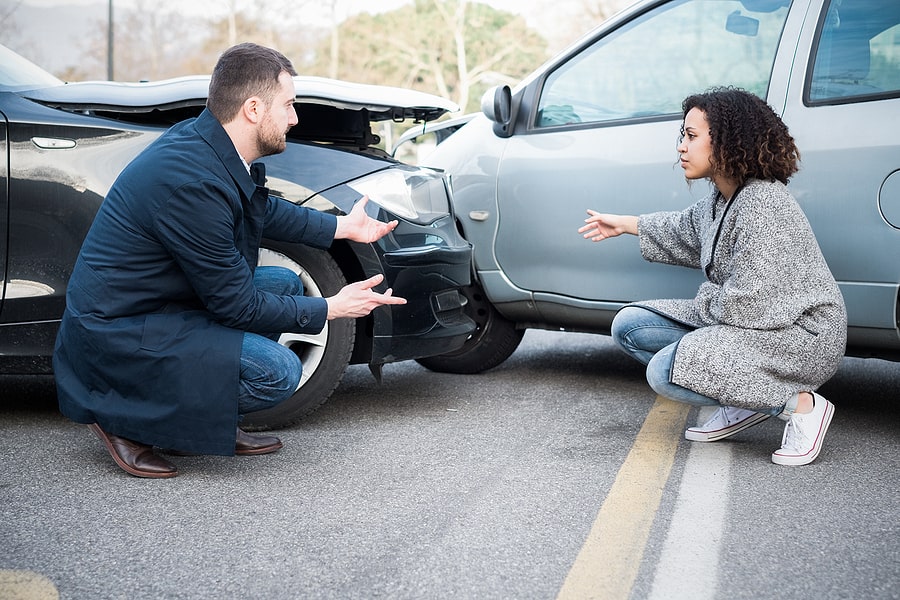
Who Is at Fault in a Rear-End Collision?
In most cases, the rear driver is at fault in a rear-end collision since they must maintain distance with the cars in from of them and pay attention to the road ahead.
However, the front driver might be wholly or partially at fault in certain circumstances.
Causes of Rear-End Collisions
Some of the common causes of rear-end collisions include:
- The front driver was moving slower than an approaching vehicle, and the driver of the approaching vehicle was distracted or rubbernecking.
- The front driver slows down without using brake lights or turn signals.
- The front driver slams on the brakes suddenly and for no visible reason.
- The rear driver does not stop at a reasonable distance.
- The rear driver is inattentive or distracted.
- Includes eating, adjusting the radio or other controls, paying attention to people in the back seat, and anything that takes eyes away from the road.
- The rear driver loses control of their vehicle.
- One of the drivers does not yield the right of way.
- The rear driver follows to close (tailgating).
- The rear driver is speeding.
- The front driver does not look when reversing.
- The front vehicle’s brake lights or taillights do not work.
- The front driver brake checks the rear driver.
- Weather – some drivers do not leave extra time to stop when the roads are wet or slippery.
Additionally, if the rear driver is tired or driving under the influence, their reaction time is often delayed, which could also cause a rear-end accident. Finally, if the front driver has to stop suddenly, that can cause a rear-end wreck, but the fault may lie with the driver or object that forced the driver to stop.
Avoiding Rear-End Collisions
Drivers can avoid most rear-end crashes by paying attention to the road and staying an appropriate distance behind the driver in front of them. If you are the lead driver, you should look ahead for hazards to have enough time to slow down and avoid an accident.
If you are on the highway, be aware of what other drivers can see. Never hang in another vehicle’s blind spot, especially near exits, on-ramps, and in other areas where people frequently change lanes.
If you need to slow down but notice that the driver behind you is not slowing down, flash your brake lights or turn your hazards on to alert the driver. If that fails to catch the driver’s attention, you can also pull onto a shoulder or median if one is available.
Common Rear-End Collision Injuries
Rear-end crashes can cause a significant number of injuries, depending on how hard the rear driver hits you.
Injuries, including catastrophic injuries, may include:
- Cuts, scrapes, scratches, bumps, and bruises
- Strains and sprains
- Muscle and other soft tissue injuries
- Seatbelt injuries, including bruising and scrapes
- Face and eye injuries
- Neck injuries, including whiplash
- Head and shoulder injuries
- Traumatic brain injuries
- Back and spinal cord injuries
- Internal injuries and bleeding
- Chemical and thermal burns
- Amputation of a limb or digit
- Wrongful Death
While some of these injuries might seem extreme, they are possible, especially if you are not wearing a seatbelt, resulting in being thrown into the windshield or even ejected from the vehicle. You could also suffer from secondary injuries in the future, such as infections, which increase your total damages from the accident.
Finally, accident injuries could exacerbate existing injuries or conditions. The at-fault driver is responsible for these injuries, as well, because the driver’s negligence directly caused them.
What to Do After a Rear-End Accident
After a car accident, you might not be able to move without causing more injury to yourself. In that case, stay put until emergency medical services arrive and can ensure your safety.
If you can move following the accident:
- Call first responders and check on others involved in the accident.
- Collect evidence from the scene that will be helpful to your claim for damages.
- Take pictures of the accident scene from all angles. Be sure to take photos of the vehicles involved, road signs, damage to the road, including skid marks and nearby property.
- Obtain contact information, registration information, and insurance information from everyone involved in the wreck. If you can, take a photo of the other drivers’ licenses, insurance cards, and registration cards or documents.
- Obtain contact information from any witnesses, including passengers in other vehicles involved in the wreck.
- Give the police officer your statement.
- Allow emergency medical technicians to check you over. Their report documents your injuries for reference in your insurance claim or lawsuit. Let medical professionals examine you even if you believe your injuries are minor.
- Do not discuss the accident with others involved.
- Do not discuss the accident with witnesses.
- Do not post about the accident on social media. It is wise not to post any of your activities after the accident on social media. Insurance companies can use your activities to show your injuries were not significant or severe and reduce or deny your claim.
- Contact a rear-end collision lawyer as soon as possible.
How Long Do I Have to File a Lawsuit?
California allows two years to file a lawsuit against someone that caused you to suffer a personal injury. However, you should not wait that long to take legal action. As time passes, you can forget pertinent facts, and evidence could disappear due to the elements or accidental or purposeful destruction. The sooner a rear-end collision lawyer can see the accident scene and review the evidence, the more accurately they can assess your case and establish who is at fault.
Additionally, it is important to get an early start on the legal process because of all that needs to occur before a trial. This includes investigating the accident, reviewing medical and police records, collecting evidence, and conducting settlement negotiations.
Can I Settle My Case Myself?

You should not attempt to settle your case yourself. Insurance companies have tricks and tactics used to deny your claim or offer a significantly reduced amount that may not cover the cost of your injuries or other damages.
An insurance company will twist what you say to blame you for the accident and avoid compensating for your injuries. A lawyer can speak with the insurance company on your behalf to prevent this. If you must notify the insurance company of your accident, only provide your name, the date and location of the wreck, and your attorney’s contact information. If the insurance company representative continues to press you for more information, continue referring them to your rear-end collision lawyer.
As a tactic, an insurance company might admit that its client is at fault, then make an offer, hoping you will accept. The premise behind this is to create rapport and trust between you and the insurer, hoping that you will believe they are offering a fair settlement.
However, this is rarely the case. If an insurance company tries to offer you a settlement or negotiate with you, refer them to your rear-end collision lawyer.
How Much Is My Rear-End Collision Accident Worth?
The value of your accident depends on factors, like who is at fault and the severity of your injuries. Your demanded compensation for the accident includes both economic and non-economic damages.
Economic Damages
Most accident victims can recover economic damages, which have a monetary value. The court orders economic damages, sometimes referred to as special damages, to make the plaintiff whole again. Economic damages include:
Medical Expenses
You can recover compensation for medical expenses that you incur immediately after and may incur after you settle your case. If doctors expect your injuries to cause long-term or permanent disabilities, a rear-end collision attorney will work to determine the cost of future medical expenses.
You could recover compensation for:
- Surgeries and follow-up appointments.
- Prescriptions and medical equipment, including ambulatory aids.
- Therapeutic appointments for occupational therapy, physical therapy, psychological therapy, and cognitive therapy.
- The installation of vehicle modifications.
- Updates to your home to make it safer and more accessible, including ramps, widened doorways, and grab bars.
Wages
After an accident, you are likely to miss work and lose wages. As part of your compensation demand, you can include lost wages. If your injuries could prevent or limit you from working long-term, you could recover for loss of future earning capacity.
If you can work part-time or your injuries force you to take other full-time work that does not pay the same as your old job, you could recover the difference in your earning capacity between when you take the pay cut and when you reach retirement.
Personal Property
You can also recover compensation for damage or destruction of personal property, including your vehicle and anything in it of value, such as cell phones and computers.
Death-Related Expenses
Finally, you can cover any death-related expenses, including funeral, burial, or cremation expenses, some probate court expenses, and the expense for a probate attorney.
Non-Economic Damages
Accident victims who suffer long-term effects, permanent disabilities, or lose a loved one in the accident may collect non-economic damages. As with economic damages, the court orders non-economic damages to make the plaintiff whole again. While the money does not bring back a loved one or fix the disabilities you incurred, it reduces the financial stress of lost income or loss of the benefit of your relationship with a loved one.
Non-economic damages include:
- Pain and suffering, including emotional distress.
- Loss of quality of life – you can no longer participate in activities you enjoyed before the accident.
- Loss of companionship – you can no longer enjoy time with your family or participate in family activities.
- Loss of consortium – you can no longer have a physical relationship with your spouse.
- Loss of use of a body part, such as a leg or an arm
- Loss of use of a bodily function
- Inconvenience – you need to hire help for domestic tasks like house cleaning, grocery shopping, lawn maintenance, and home repair and maintenance.
- Amputation of a limb or digit
- Substantial scarring or disfigurement
If you suffered injuries or lost a loved one in a rear-end crash, contact a rear end collision lawyer as soon as possible for a free case evaluation. Focus on your recovery and let the professionals fight for the compensation you deserve.
